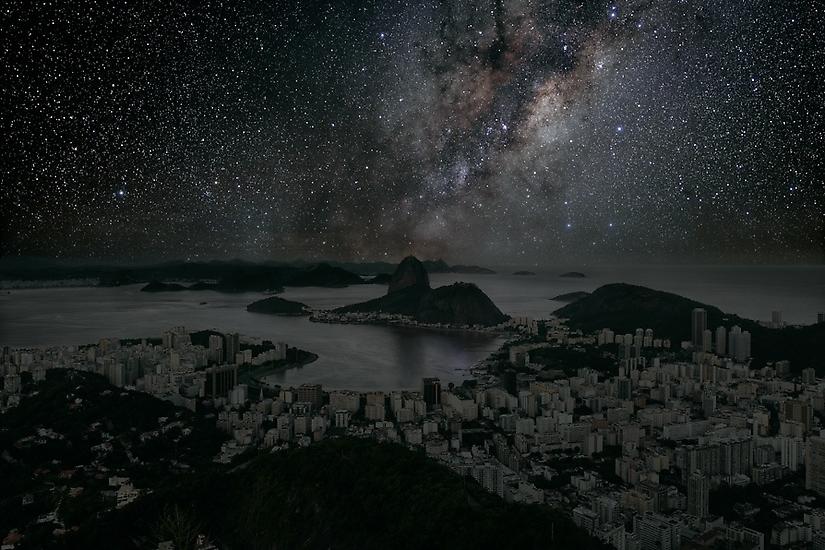A month or two back we went to Jaisalmer and spent a night in the desert. The dunes were nice, but most fascinating was falling asleep to a real, starry, clear night sky. It’s only when taken out of the intense light of the city that you realize how the stars have been lost to us.
Cohen’s method is original and precise and harkens back to the methodologies employed by early 19th century photographers like Gustave Le Grey. He photographs the world’s major cities, seeking out views that resonate for him and noting the precise time, angle, and latitude and longitude of his exposure. As the world rotates around its axis the stars that would have been visible above a particular city move to deserts, plains, and other places free of light pollution. By noting the precise latitude and angle of his cityscape, Cohen is able to track the earth’s rotation to places of atmospheric clarity like the Mojave, the Sahara, and the Atacama desert. There he sets up his camera to record what is lost to modern urban dwellers.
